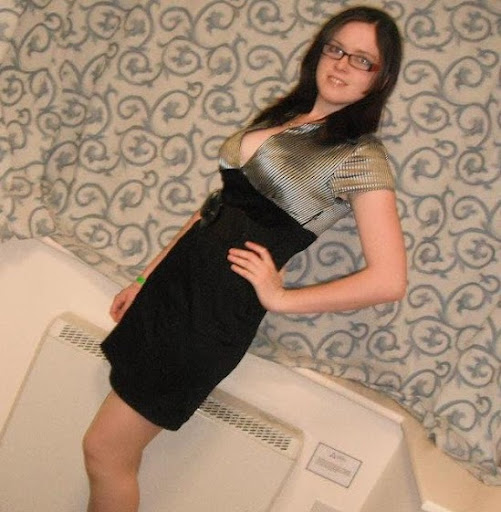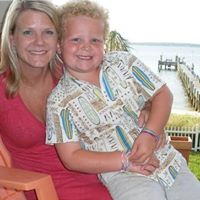Caroline A Ross
age ~45
from Boston, MA
- Also known as:
-
- Caroline Ashley Ross
- Caroline R Barney
Caroline Ross Phones & Addresses
- Boston, MA
- 3902 Janssen Ave, Chicago, IL 60613 • 7732964789
- 3550 S Bay Bluffs Dr, Cedar, MI 49621 • 2312282291
- Marshall, MI
- New York, NY
Name / Title
Company / Classification
Phones & Addresses
Founder
Grove Solution
Business Services
Business Services
29 Lee Ter, Arlington, MA 02474
Lawyers & Attorneys
Isbn (Books And Publications)






Us Patents
-
Magnetic Memory Elements Using 360° Walls
view source -
US Patent:6906369, Jun 14, 2005
-
Filed:Feb 10, 2004
-
Appl. No.:10/775600
-
Inventors:Caroline A. Ross - Boston MA, US
Fernando J. Castano - Cambridge MA, US -
Assignee:Massachusetts Institute of Technology - Cambridge MA
-
International Classification:H01L029/76
-
US Classification:257295, 428692, 428694, 428900, 365129, 365158, 365173
-
Abstract:A magnetic-ring structure includes at least two states, and at least one twisted state that includes a 360 domain wall that can exist over a wide range of applied fields.
-
Magnetooptical Isolator Material
view source -
US Patent:7006289, Feb 28, 2006
-
Filed:Sep 4, 2003
-
Appl. No.:10/655378
-
Inventors:Caroline A. Ross - Boston MA, US
Tamar Tepper - Haifa, IL
Ytshak Avrahami - Arlington MA, US -
Assignee:Massachuesetts Institute of Technology - Cambridge MA
-
International Classification:G02B 27/28
G02B 5/30 -
US Classification:359500, 359494, 385 11
-
Abstract:An optical isolator is provided. The optical isolator includes a substrate and a thin film is formed comprising of iron oxide or magnetic persovskite-type material having a high Faraday rotation.
-
System And Method For Performing Multi-Resolution Lithography
view source -
US Patent:7303860, Dec 4, 2007
-
Filed:Dec 6, 2002
-
Appl. No.:10/313309
-
Inventors:Bernhard Vogeli - Boston MA, US
Timothy A. Savas - Cambridge MA, US
Henry I. Smith - Sudbury MA, US
Caroline A. Ross - Boston MA, US -
Assignee:Massachusetts Institute of Technology - Cambridge MA
-
International Classification:G03F 7/26
-
US Classification:430316, 430313
-
Abstract:A micro-fabricated structure and method of forming a micro-fabricated structure are disclosed. The method includes the steps of forming a first pattern in a first photo-resist, transferring the first pattern in the first photo-resist to a mask layer, forming a second pattern in a second photo-resist, and transferring the second pattern in the second photo-resist to the mask layer. In various embodiments, the method may further include the steps of forming a first pattern in a first photo-resist, forming a second pattern in a second photo-resist, and transferring the first and second patterns to a target layer.
-
Formation Of Close-Packed Sphere Arrays In V-Shaped Grooves
view source -
US Patent:7790045, Sep 7, 2010
-
Filed:Sep 13, 2007
-
Appl. No.:11/854872
-
Inventors:Caroline A. Ross - Arlington MA, US
-
Assignee:Massachusetts Institute of Technology - Cambridge MA
-
International Classification:B44C 1/22
B05D 3/00 -
US Classification:216 2, 216 39, 216 41, 216 55, 216 83, 216 67, 216 99, 427256, 427309, 4273722, 977888, 977895, 977900
-
Abstract:The present invention relates to the self-assembly of a spherical-morphology block copolymer into V-shaped grooves of a substrate. Although spherical morphology block copolymers typically form a body-centered cubic system (bcc) sphere array in bulk, the V-shaped grooves promote the formation of a face-centered cubic system (fcc) sphere array that is well ordered. In one embodiment, the (111) planes of the fcc sphere array are parallel to the angled side walls of the V-shaped groove. The (100) plane of the fcc sphere array is parallel to the top surface of the substrate, and may show a square symmetry among adjacent spheres. This square symmetry is unlike the hexagonal symmetry seen in monolayers of spherical domains and is a useful geometry for lithography applications, especially those used in semiconductor applications.
-
Orientation-Controlled Self-Assembled Nanolithography Using A Block Copolymer
view source -
US Patent:8147914, Apr 3, 2012
-
Filed:Jun 11, 2008
-
Appl. No.:12/137016
-
Inventors:Yeon Sik Jung - Cambridge MA, US
Caroline A. Ross - Arlington MA, US -
Assignee:Massachusetts Institute of Technology - Cambridge MA
-
International Classification:B05D 3/02
-
US Classification:427384, 427256, 4273722, 427553, 427534, 427535, 427536, 216 2, 216 39, 216 58, 216 67, 977888, 977895, 977900
-
Abstract:Disclosed is a structure made of a trench patterned substrate having a pre-determined trench period and a pre-determined mesa to trench width ratio, and a block copolymer on top of the trench patterned substrate. The block copolymer has at least an organic block and a silicon-containing block, wherein the block copolymer can have either perpendicular or parallel cylinders. The structure is annealed under a pre-determined vapor pressure for a predetermined annealing time period, wherein the pre-determined trench period, the pre-determined mesa to trench width ratio, the predetermined vapor pressure and the predetermined annealing time period are chosen such that cylinders formed in the block copolymer are either perpendicular or parallel with respect to the trench-patterned substrate. A method is also described to form the above-mentioned structure.
-
Formation Of Close-Packed Sphere Arrays In V-Shaped Grooves
view source -
US Patent:8163374, Apr 24, 2012
-
Filed:Jun 7, 2010
-
Appl. No.:12/795318
-
Inventors:Caroline A. Ross - Arlington MA, US
-
Assignee:Massachusetts Institute of Technology - Cambridge MA
-
International Classification:B32B 3/28
B32B 3/30 -
US Classification:428167, 977888, 977895, 977900
-
Abstract:The present invention relates to the self-assembly of a spherical-morphology block copolymer into V-shaped grooves of a substrate. Although spherical morphology block copolymers typically form a body-centered cubic system (bcc) sphere array in bulk, the V-shaped grooves promote the formation of a face-centered cubic system (fcc) sphere array that is well ordered. In one embodiment, the (111) planes of the fcc sphere array are parallel to the angled side walls of the V-shaped groove. The (100) plane of the fcc sphere array is parallel to the top surface of the substrate, and may show a square symmetry among adjacent spheres. This square symmetry is unlike the hexagonal symmetry seen in monolayers of spherical domains and is a useful geometry for lithography applications, especially those used in semiconductor applications.
-
Guided Self-Assembly Of Block Copolymer Line Structures For Integrated Circuit Interconnects
view source -
US Patent:8309278, Nov 13, 2012
-
Filed:Sep 17, 2010
-
Appl. No.:12/885051
-
Inventors:Joel K. W. Yang - Research Link, SG
Karl K. Berggren - Delft, NL
Yeon Sik Jung - Cambridge MA, US
Caroline A. Ross - Arlington MA, US -
Assignee:Massachusetts Institute of Technology - Cambridge MA
-
International Classification:G03F 1/50
H01L 21/31
H01L 21/469 -
US Classification:430 5, 216 49, 438947
-
Abstract:Complex self-assembled patterns can be created using a sparse template and local changes to the shape or distribution of the posts of the template to direct pattern generation of block copolymer. The post spacing in the template is formed commensurate with the equilibrium periodicity of the block copolymer, which controls the orientation of the linear features. Further, the posts can be arranged such that the template occupies only a few percent of the area of the final self-assembled patterns. Local aperiodic features can be introduced by changing the period or motif of the lattice or by adding guiding posts. According to one embodiment, an array of carefully spaced and shaped posts, prepared by electron-beam patterning of an inorganic resist, can be used to template complex patterns in a cylindrical-morphology block copolymer. These complex self-assembled patterns can form a mask used in fabrication processes of arbitrary structures such as interconnect layouts.
-
Wheatstone-Bridge Magnetoresistive Device
view source -
US Patent:8415755, Apr 9, 2013
-
Filed:Sep 25, 2007
-
Appl. No.:11/860737
-
Inventors:Fernando J. Castano - Cambridge MA, US
Caroline A. Ross - Arlington MA, US -
Assignee:Massachusetts Institute of Technology - Cambridge MA
-
International Classification:H01L 29/82
H01L 21/02 -
US Classification:257421, 257295, 257E29323, 257E21665, 365129, 365145
-
Abstract:A magnetoresistive Wheatstone-bridge structure includes a magnetoresistive ring structure. The magnetoresistive ring structure includes a first magnetic layer comprising a ferromagnetic material. A second magnetic layer also includes a ferromagnetic material. A non-magnetic spacer is positioned between the first magnetic layer and the second magnetic layer. A vacant open region is positioned in the center region of the magnetoresistive ring structure. A plurality of magnetic states can exist in either the first magnetic layer or second magnetic layer. Furthermore, the magnetoresistive Wheatstone-bridge structure includes a plurality of voltage and current contacts arranged symmetrically upon the magnetoresistive ring structure. The magnetic state of the ring is detected by measuring its resistance.
Plaxo

Caroline Ross
view sourceGreater Boston AreaPast: Assistant Vice President at United Way of Massachusetts Bay and Merrimack Valley

Caroline Ross
view sourceErnst Young

Caroline Ross Grossman
view sourceChicago, IL
Classmates

Caroline Ross
view sourceSchools:
Davie Jones Elementary School Pitt Meadows Saudi Arabia 1982-1990
Community:
Ronald Henschel, Judy Taylor, Valerie Gibson, Tyson Araszewski, Nancy Allen

Caroline Ross
view sourceSchools:
Southampton Institute Southampton CT 1999-2002

Caroline Ross (Romero)
view sourceSchools:
Crescent Park Elementary School White Rock Saudi Arabia 1967-1972, White Rock Junior High School White Rock Saudi Arabia 1973-1975
Community:
Susan Taylor, Richard Kempe, Gillian Jill, Dana Thompson

Caroline Ross (King)
view sourceSchools:
Concord High School Concord MI 1983-1987
Community:
Erin Dane, Greg Frye

Caroline Ross (Guillory)
view sourceSchools:
Bunche Junior High School Compton CA 1961-1964
Community:
Jeffrey Elliott, Phoebe Macon, Diane Johnson

Caroline Ross (Strickland)
view sourceSchools:
University of Houston - Main Campus Houston TX 1996-2000
Community:
Geoffrey Jones, Daniel Varney

Caroline Ross
view sourceSchools:
River Oaks Baptist School Houston TX 2001-2005
Community:
Sandy Washburn, Laura Wylie

Caroline Ross
view sourceSchools:
bellport senior high shcool Bellport NY 1978-1982
Community:
Jackie Williams, Mriam Morales, Valerie Beckwith, Wendy Seeley, Torin Zielenski, Ana Ana Rosa, Maylene Singh
Youtube
Myspace
Googleplus

Caroline Ross
Lived:
Medford, MA
Reading, MA
Poughkeepsie, NY
Brookline, MA
Reading, MA
Poughkeepsie, NY
Brookline, MA
Work:
Pearson, Century 21, - Publishing, Real Estate Agent
Education:
Bentley University - MBA - Real Estate Management, Marist College - Journalism

Caroline Ross
Work:
Greater Sudbury - Graphics and Coporate Communitcations
Www.carolinephotography.ca - Photographer
Www.carolinephotography.ca - Photographer
Education:
Laurentian University - Bachelor of Fine Arts
About:
Caroline Ross, Sudbury wedding photographer!

Caroline Ross
Work:
Surrey Interiors - Admin Assissant
Education:
Canterbury Christ Church University - Music

Caroline Ross
Education:
University of Toronto

Caroline Ross
Education:
Washington University in St. Louis - History & Economics

Caroline Ross

Caroline Ross

Caroline Ross

Caroline Ross Langcasan
view source
Caroline Adam Ross
view source
Caroline Ross Wright
view source
Caroline Flora Ross
view source
Caroline Elizabeth Ross
view source
Caroline N. Ross
view source
Caroline Hiatt Ross
view source
Caroline Foreman Ross
view sourceNews

Self-assembling materials can form patterns that might be useful in optical devices
view source- The new findings appear in the journal Nature Communications, in a paper by postdoc Yi Ding, professors of materials science and engineering Alfredo Alexander-Katz and Caroline Ross, and three others.
- Date: Jul 05, 2019
- Category: Science
- Source: Google
Flickr
Get Report for Caroline A Ross from Boston, MA, age ~45
















